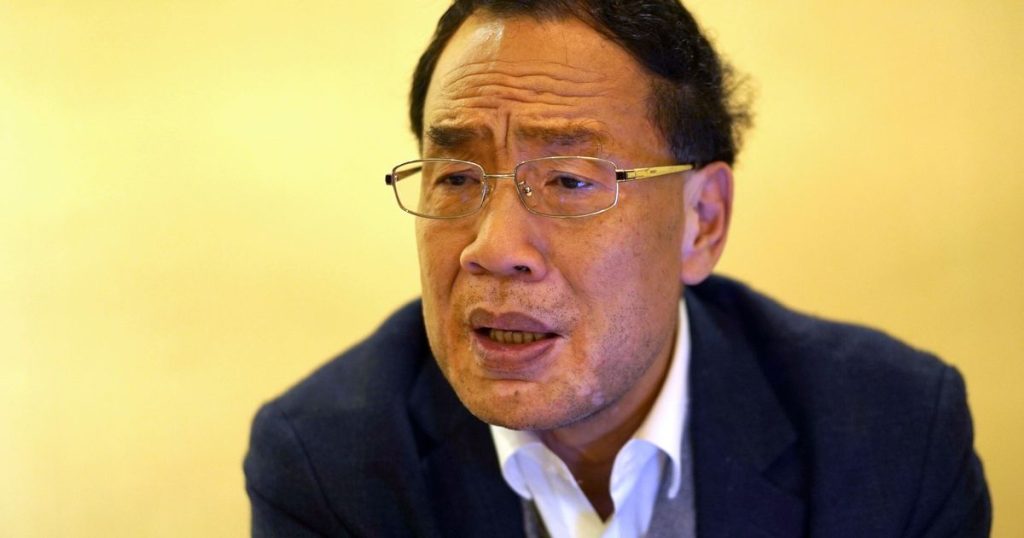Zhang Yongzhen, the first scientist to publish a sequence of the COVID-19 virus in China, staged a sit-in protest outside his lab after being locked out by authorities, signaling Beijing’s ongoing pressure on researchers studying the coronavirus. Zhang and his team were evicted from their lab, which was the latest setback they faced since the virologist published the sequence in January 2020 without state approval. When Zhang attempted to enter the lab over the weekend, he was blocked by guards, leading him to protest by sitting outside in the rain. The news of the protest spread widely on Chinese social media, but it was unclear whether he remained there.
The Shanghai Public Health Clinical Center stated online that Zhang’s lab was closed for renovation and for safety reasons, but they offered an alternative laboratory space for his team. However, Zhang claimed that the lab provided did not meet safety standards for conducting their research, leaving his team in limbo. This situation exemplifies how China has tried to control information related to the virus, with the government freezing domestic and international efforts to trace it since the outbreak began. Labs have been closed, collaborations disrupted, foreign scientists forced out, and Chinese researchers barred from leaving the country.
Zhang’s troubles began when he decoded the virus on January 5, 2020, but did not make the sequence public initially. He warned Chinese authorities of the virus’s potential to spread through an internal notice, but his lab was temporarily shut the next day by China’s top health official. Foreign scientists soon learned that Zhang and his team had deciphered the virus and called for him to publish the sequence. Despite lacking government permission, Zhang published the coronavirus sequence on January 11, 2020. Sequencing a virus is crucial for developing test kits, disease control measures, and vaccinations, as the virus went on to cause a global pandemic with devastating consequences.
While Zhang was later awarded prizes for his work, the publication of the sequence led to further scrutiny of his lab. His collaborator, Edward Holmes, mentioned that Zhang was removed from a post at the Chinese Center for Disease Control and Prevention and prevented from collaborating with former partners, severely impacting his research. Holmes noted that there has been a campaign against Zhang since he defied authorities by releasing the genome sequence of the virus, and he has been unfairly targeted and broken by the process. Despite these challenges, Zhang continues to pursue science and the truth, as evidenced by his sit-in protest outside his lab in response to being locked out by authorities.
The ongoing pressure on Zhang and his team reflects the broader control exerted by the Chinese government on scientists conducting research on the coronavirus. The struggles faced by Zhang highlight the lengths to which the government is willing to go to restrict information related to the virus, even at the expense of scientific research and collaboration. As the pandemic continues to impact lives and economies worldwide, the important work of scientists like Zhang in decoding the virus and developing solutions remains crucial, despite the challenges and barriers imposed by authorities. Zhang’s determination to pursue science and seek the truth in the face of adversity serves as a reminder of the importance of transparency and collaboration in addressing global health crises like COVID-19.


